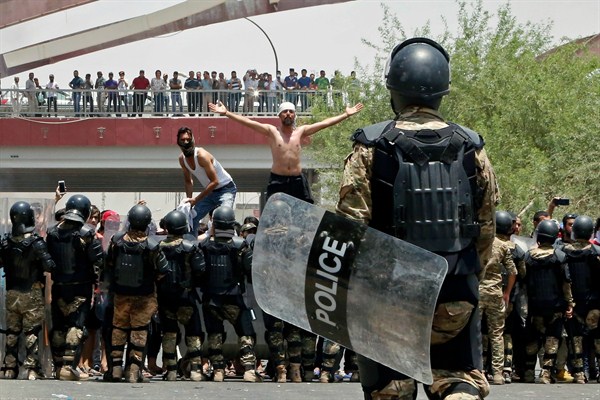In what is becoming a summer ritual in southern Iraq, protesters took to the streets to voice their grievances amid scorching heat over the course of the past several weeks. Their government’s inability to provide basic services, namely electricity and water, makes the harsh summer unbearable to many Iraqis. The high unemployment rate means that many cannot afford a basic standard of living.
Reflecting a heightened mood of desperation, the latest round of protests turned more violent than in previous years. In nine Iraqi provinces, protesters stormed government buildings and infrastructure as well as political party offices, at times setting them ablaze. No major leader or political party was spared. Demonstrators even attacked the offices of populist cleric-turned-politician Muqtada al-Sadr, who in the past has been a leader of the protests.
While the latest demonstrations may not lead to immediate and significant change, they signal a shifting reality of conflict in Iraq. For the first time, the government in Baghdad explicitly targeted demonstrators in the south, leading to an unprecedented number of deaths and injuries; at least eight demonstrators had been reported killed as of this week. At its core, this recent wave suggests that the next fault line in Iraq will not be between Shiites, Sunnis, and Kurds, but between the people and the ruling class, which has failed to govern for the past 15 years.

